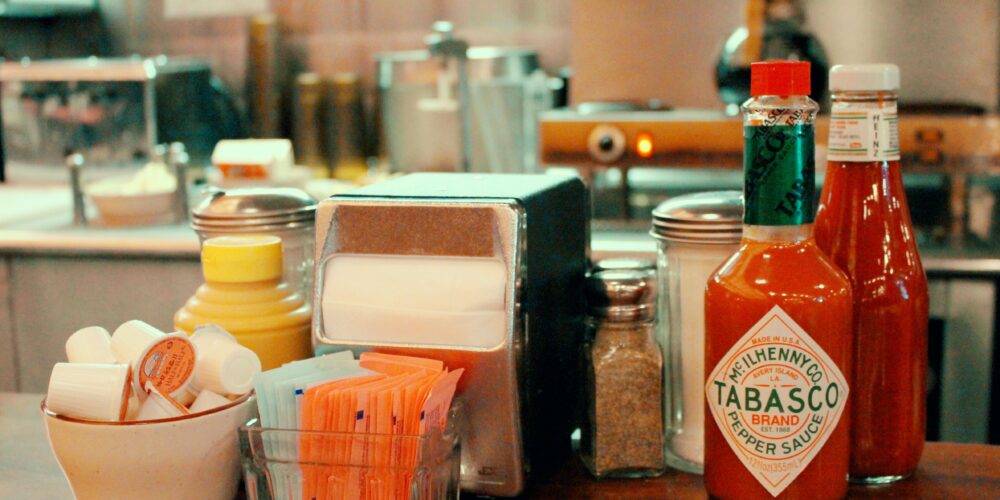What does your customer actually buy?

I am always very interested in long-lived companies and brands. It is not easy to live long as a business, and most do not. What special things do the venerable ones do?
This week I cast my eye on a set of products that are always in our kitchen and pantry shelves, and never seem to change: sauces and condiments. This was prompted by listening to an entertaining podcast by the BBC’s Business Daily recently.
What are your favourites? Heinz Ketchup? Tabasco Pepper Sauce? Peptang Chili Sauce? Lea & Perrins’ Worcestershire Sauce? HP Sauce? Kikkoman Soy Sauce?
And how long have you been using them? Worcestershire Sauce has been around since 1837. Tabasco was born more than 150 years ago. Kikkoman dates from 1917. Peptang first hit the shelves in 1935. Why do these brands and products seem to outlast their founders?
Part of the reason may be that many of these are family-owned businesses, often with the family’s name on the product. That creates a personal pride in generations of family members, and provides a highly emotional incentive to keep the product going, decade after decade. But many family businesses also bite the dust, often soon after the departure of the iconic founder. So that alone does not explain the phenomenon.
Take one example: Tabasco is a family enterprise of the (originally) Irish McIlhenny clan. It is a long-lived success. It has been in my home since I was a boy, and possibly in yours too. The current CEO is the eighth family member to take the helm. There are quality processes that were introduced at the outset, now protected by every new generation—it’s pretty much the exact same original sauce. They may introduce new products, but they never mess with the classic. You may have noticed: even the label on the bottle never changes.
There’s a particular force at play here, and it’s a hidden one: the power of human emotion. For most of us, the many sauces that we continue to consume hark back to childhood—to a more innocent time, when the world was a place of wonder and discovery. The sauces we put on our favourite foods when we were kids became a source of comfort and continuity. Later in life, when uncertainty and thwarted hopes hold us in their grip, it reassures us to reach for the tastes that remind us of gentler, more hopeful days.
The best sauce-makers are very aware of the power of emotion in foodstuffs. Once they have an exceptional taste that becomes popular, they go flat out to brand it and market it widely—and refrain from messing with the product recipe, the shape of the bottle, even the colour of the logo. Because in matters of emotional comfort, continuity and consistency really matter.
Coca-Cola was once forced to learn this lesson very bitterly, when it embarked on the wild goose chase of messing with the formula of its classic cola. The backlash from consumers was immediate and vociferous. Had Coca-Cola not backed down and reinstated the original Coke, it faced an existential crisis. It was left stunned by the wave of anger its misguided strategy created.
Humans form very strong bonds with certain products, particularly those that affect our emotional wellbeing. Change may be very important in all our lives, but so is continuity. Change unsettles us and introduces discomfort; continuity reassures and anchors us. Many food products play this stabilising role in our lives; so do the products that shape how we dress, furnish our homes, or groom our bodies. Take a look at some of those categories in your life, and you may notice how many beloved products have been with you for decades—and look exactly the same.
It would be foolish to make a smartphone today look like its original model of even 10 years ago—the technology and functionality has moved on dramatically over that period. Most of us would not want to drive cars with the discomfort or rough handling of some of the old classics. We would be suspicious of a bank that stays rooted in the “good old” ways of yore, which were actually inconvenient and time-consuming.
But it takes a lot to make human beings change their tried-and-tested ketchups and sauces. Those products are given the status of heritage items, almost of heirlooms. They are there because they remind us of whence we came, of gentler times, of our departed parents, of our heritage. When such a strong set of emotions is driving a particular consumption, that consumption becomes an unshakeable habit—and habit is the strongest, most formidable type of customer loyalty.
So at your next strategy retreat, ask yourself this essential question: what is our customer actually buying? What role does emotion play in the purchase of our products, and which emotions are paramount? The lesson in a nutshell is this: people don’t really buy products and services; they don’t even buy solutions. Fundamentally, they buy feelings. Are you aware of the feelings surrounding your offerings, and are you actually selling those feelings?
(Sunday Nation, 12 March 2023)

Buy Sunny Bindra's new book
The X in CX
here »
Popular Posts
- You are who you hang out withSeptember 28, 2025
- Why your mother was right about your anxietyOctober 12, 2025
- Born knowing the waySeptember 21, 2025
- The balance sheet that mattersOctober 5, 2025
- The art of the CX rescueSeptember 14, 2025















